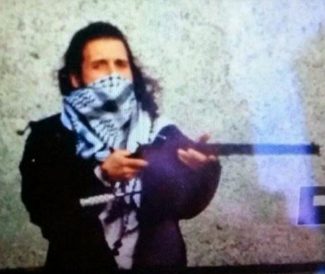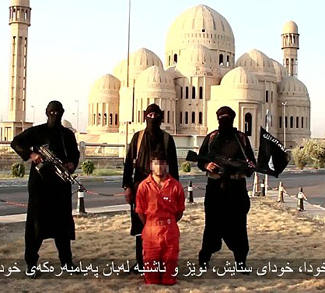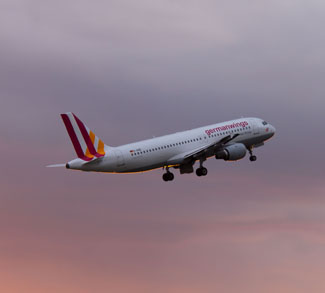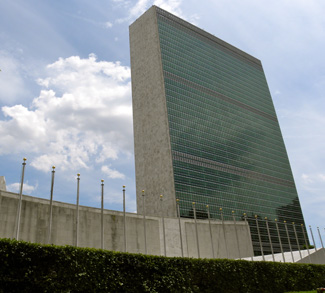In the hours following the October 22 killing of Cpl Nathan Cirillo as he stood guard at the War Memorial in Ottawa, the reactions coming out of the nation’s capital made it clear that things in Canada would likely never be the same again.
Details are still emerging about gunman Michael Zehaf-Bibeau, the Quebec-born man that had recently converted to Islam. After killing Cirillo, Zehaf-Bibeau calmly jumped in a vehicle and made the 400-yard trek from the War Memorial to Parliament Hill. He then entered the Centre Block, which is where the majority of Members of Parliament and Senators have their offices. Zehaf-Bibeau was able to get troublingly close to where the three federal parties were having their weekly caucus meetings before being killed by the House of Commons Sergeant-at-Arms. Images later emerged showing that Conservative caucus members had piled tables and chairs several feet high to barricade themselves in the room they occupied.
The unprecedented attack marked the second time in three days that a Canadian solider had been killed, and while there is nothing to suggest that the two incidents are connected, the similar style of ‘lone wolf’ attack has authorities on both sides of the border concerned.
Earlier this week in Quebec, Martin Couture-Rouleau laid in wait for at least two hours in his car in a parking lot before running down two soldiers, killing one and injuring the other. Rouleau, who was later killed by police, had also recently converted to Islam and had been on the Royal Canadian Mounted Police’s (RCMP) radar for at least five months. In July, the assailant was arrested and his passport confiscated as he tried to board a plane for Turkey. He was never charged but had been interviewed by police as recently as two weeks before the attack. CNN has reported that like Couture-Rouleau, Michael Zehaf-Bibeau also had his passport confiscated by Canadian authorities.
As more becomes known about the attack in Ottawa in the days and weeks to come, two narratives are likely to dominate the discourse. The first relates to security surrounding Parliament Hill and how the gunman was able to get so close to elected officials. The other, broader narrative will focus on the kind of homegrown terrorism that is now evident in Canada.
While the extent of the Ottawa attack has never before been seen in Canada, there is precedence for would-be assailants getting extremely close to the steps of Parliament. According to Paul Wells of Macleans, a hijacked Greyhound bus drove onto the front lawn of the legislature in 1989, and in 1996 a man drove his car into the front door.
It seems troubling that a gunman was able to walk through the front doors of the main Parliament building to get so close to Canada’s politicians and senators before being stopped. It is even more troubling when one considers the heavy security that surrounds congressional buildings in the United States (despite a man being able to climb the fence and enter the White House last month).
There are probably two explanations for the seemingly lax security. While Parliament Hill is home to the federal legislature, it is also a large, open and mostly public area. In addition, the Parliament buildings are a popular tourist destination that attract upwards of 1.5 million visitors each year. There were some changes made after 9/11 but as one politician said, “that building is the people’s building and we’ve been able to pride ourselves on its accessibility to people.”
The other, related reason is that Canadians have never taken security all that seriously, especially in relation to their US counterparts. There just is not the same kind of underlying culture of fear and need for protection in Canada that seems to exist in America.
Adding to the perception of inadequate security around Ottawa is that Canada’s Auditor-General called for a unified security presence around Parliament Hill more than two years ago. There are currently four different security forces that patrol parliamentary buildings, the surrounding grounds, and nearby streets. The report called for security efforts to be controlled by a single point of command, something that was agreed to in principle by Members of the House and Senate in 2010, but had not been implemented. This attack will surely renew security concerns, and there will almost certainly be changes made.
The sum of this week’s attacks has reminded Canadians that they are not immune from the terrorist attacks taking place throughout the world. The killing in Ottawa came just two days after the first attack. On the day in between, Canada’s CF-18s took off from Alberta to join in the fight against ISIS in Iraq. All of this came about a month after ISIS called for these types of one-off attacks in Canada and the United States.
The RCMP is aware of approximately 130 people who have allegedly left Canada to help terrorist fights abroad, 80 of which have returned back to Canada. Consequently, the Mounties have opened 63 criminal investigations targeting 90 individuals on the basis of intelligence provided to them by the Canadian Security Intelligence Service (CSIS). Couture-Rouleau, who carried out Monday’s vehicular attack in Quebec, was allegedly one of those 90 people.
Lawmakers recently altered the Criminal Code to give authorities the jurisdiction to charge people who travel for terrorist purposes. But after consulting with prosecutors, Mounties were unable to charge Couture-Rouleau because there was insufficient evidence that he was travelling for these purposes, or that he would commit a crime in Canada.
But these attacks have heightened concerns not just about terrorists who are returning to Canada, but about a new breed of extremists who never had any intention of going abroad to fight.
And whether these two men were legitimate terrorists in the traditional sense of the word, or just fringe wannabes acting out disturbed fantasies misses the point of what ISIS is about. Unlike Al-Qaeda, which operates on the basis of well-organized, large-scale attacks, the Islamic State seems to promote the lone wolf style of attack that can be advocated through their impressive command of social media.
These events also have important domestic policy and political considerations. Prime Minister Stephen Harper now has to strike a balancing act of confronting the terrorist threat without going too far. While the current situation is markedly different than what led Pierre Trudeau to invoke the War Measures Act during the October Crisis of 1970, Harper needs to emphasize national security without being seen as impinging on personal freedoms. Failure to find the right balance will likely have political consequences. Trudeau became wildly unpopular after calling the army into the nation’s capital, but it would likely be even more detrimental to be seen as not acting strongly enough in response to these attacks.
The federal Conservatives will also make foreign policy and national security a significant aspect of their campaign for next fall’s election. This is the leading issue that the Conservatives can use to demonstrate the chasm in leadership abilities between Harper and Liberal heir-apparent Justin Trudeau, who continues to make foreign policy remarks that register with the electorate as immature and ill-considered.
While it is still unclear how far the effects of this week’s attacks will reach, what is clear is that things in Canada are unlikely to be the same anytime soon.
The opinions, beliefs, and viewpoints expressed by the authors are theirs alone and don’t reflect any official position of Geopoliticalmonitor.com.




